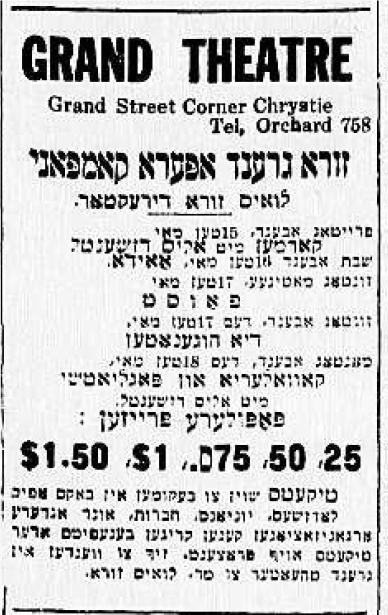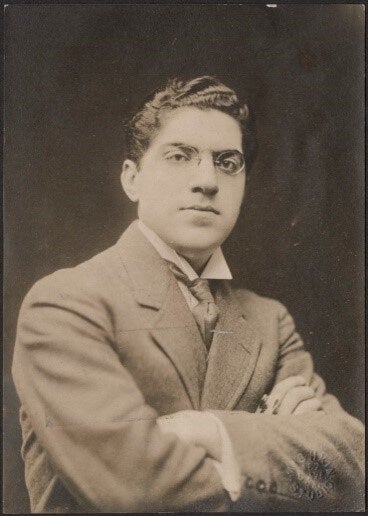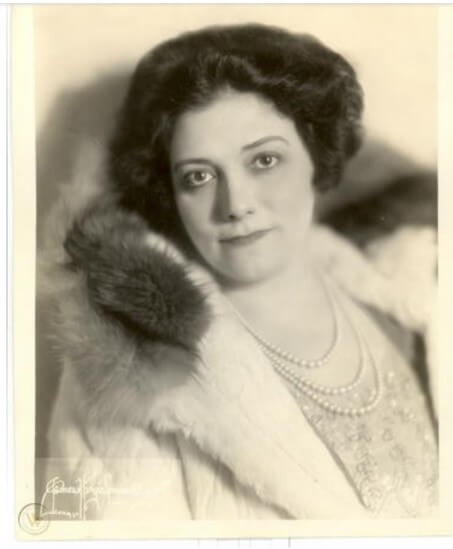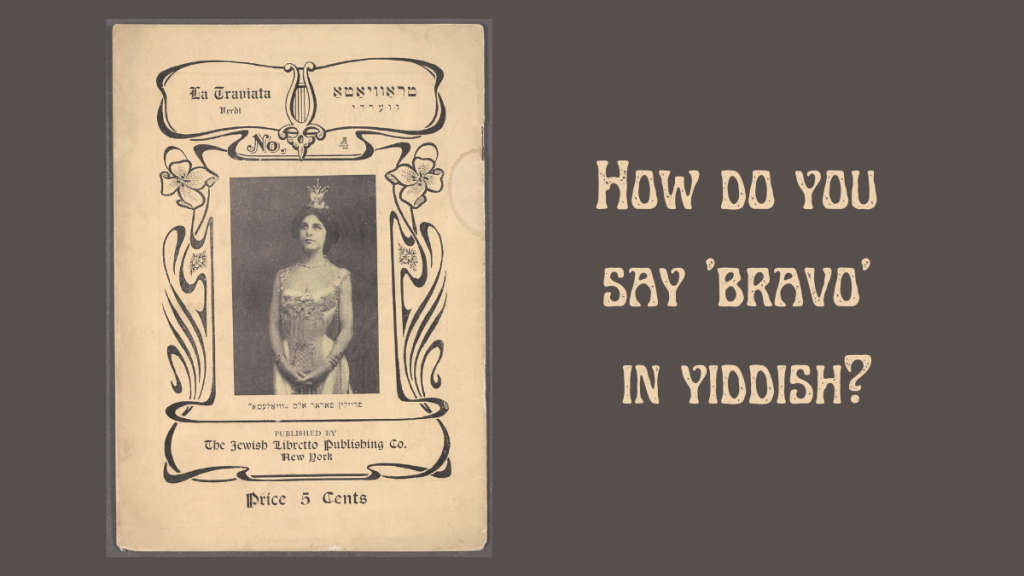by Daniela Smolov Levy
In her 4th part of the “Italian Opera for the Yiddish-Speaking Masses” series, Daniela illuminates how the impresario and educator, Josiah Zuro, finds innovative ways of attracting Italians, Jews and Americans to attend opera performances, uniting these groups through a common love of the genre.
The eminent New York music critic W. J. Henderson could not contain his bewilderment over the persistence of what was known as “cheap opera” in early twentieth-century New York. In three lengthy newspaper articles between 1908 and 1915, Henderson wondered why impresarios were not getting the message that – as he perceived it – the public did not want popular price opera: the companies had all “died for lack of patronage” and were simply exercises in “faith, hope and charity.” [1] Although most popular price opera companies of the era were indeed a flash in the pan, impresarios – and audiences – kept coming back for more. There always seemed to be someone willing to pick up the pieces of failed companies, reorganize them, and try again. New York’s Lower East Side, full of avid music lovers of humble means, including Yiddish-speaking Jewish immigrants as well as Italians, was a place where many popular price opera impresarios repeatedly tried their hand.

The Zuro Grand Opera Company was one such enterprise, run by the father-son duo of impresario Louis Zuro and music director and conductor Josiah, Bialystock Jews who had immigrated to New York in 1906. Performing predominantly in Lower East Side theaters each spring between 1911 and 1915, the Zuros offered short seasons of popular Italian, French, and German operas. Although the Zuro organization was in many ways typical of popular price opera companies of the time, the rhetoric surrounding it reveals a shifting relationship between immigrant-oriented Lower East Side opera culture and the wider opera sphere.

The Zuro company bore many similarities to Ivan Abramson’s of a few years earlier, offering solid, enthusiastic, rough-and-ready performances with occasional moments of high artistic attainment. Both companies had singers and musicians with experience in prestigious European and American opera houses. Both troupes performed mainly in Lower East Side venues, targeting Jewish and Italian audiences, but also sometimes in mainstream theaters where they drew a more middle-class and Anglo-American public while maintaining – and actively underscoring – their low prices. Both companies also highlighted Jewish elements in the subjects of operas and their composers as well as the presence of Jewish singers in the company.
The Zuro organization also revealed echoes of a giant of the mainstream opera scene, Oscar Hammerstein, who had sought to make his elite opera offerings appealing and accessible to Lower East Side Yiddish speakers in recent years. Although by 1911 Hammerstein was no longer giving opera in New York, his influence continued to loom large in both the uptown and downtown scenes. It was Hammerstein who had given the eighteen-year-old Josiah Zuro his start in opera as assistant chorusmaster of the brand new Manhattan Opera in 1906, where he rose quickly in the ranks to assistant conductor.

In both the English- and Yiddish-language press, the Zuros were seen as continuing Hammerstein’s ideological legacy in offering an uplifting, educational experience by exposing mass audiences to opera, especially those unfamiliar with the genre. Also like Hammerstein, the Zuros cast their undertaking as philanthropic, not caring if they made a profit, and engaged some former Manhattan Opera singers, making the Zuro company seem in some ways an unofficial downtown extension of Hammerstein’s enterprise. The Yiddish press also frequently referred to Zuro’s Hammersteinian pedigree as assurance of the Zuro company’s high quality.

But the Zuros also stood out among opera companies aimed at Jewish immigrant audiences. More than their predecessors, the Zuros were viewed in Yiddish-speaking circles as a distinctively Jewish institution. When they moved during their first season from the downtown People’s Theater to the Daly’s Theater farther uptown, the humorous Yiddish magazine Der Kibetser observed that “the goyim have a tendency to kidnap good things from us,” revealing a sense of Jewish ownership of the enterprise. [2] In 1914, prominent figures from the Metropolitan Opera attended a Zuro Carmen performance on the Lower East Side, leading them to hire Josiah Zuro to conduct for their popular price Century Opera that fall.
These “kidnappings” show how the Zuro company was blending into the wider cultural sphere, revealing a trend of increasing integration and assimilation of Lower East Side-based theatrical offerings and performers into the American mainstream. Abramson represents the beginning of this trend, but his company lasted less than half as long as the Zuros’, and he left the opera field after his company folded in 1909. Despite Hammerstein’s efforts to make Yiddish-speaking audiences feel integrated into the mainstream opera world, his company had been a distinctively uptown one. The Zuro Opera, by contrast, was a downtown enterprise with connections to the uptown sphere: Josiah Zuro himself was a link between Jewish immigrant circles and the Anglo-American operatic mainstream, bringing an uptown opera pedigree to the downtown context.
The Zuro organization is also significant in having been a springboard for further opera democratization efforts. Josiah Zuro went on to an influential career as a promoter of opera and classical music among the mass public. Among other things, he organized opera performances in baseball stadiums, spearheaded educational initiatives to train young musicians and expose public school students to opera, and later worked in radio as well as film, where he was just beginning a large-scale opera film project with the Pathé company when he died in a car accident in 1930. Through these varied innovative strategies, Josiah Zuro brought together diverse audiences for opera, his immigrant beginnings, by-the-bootstraps mentality, and eventual integration into the wider operatic scene representing a distinctively American story.
Notes:
[1] W. J. Henderson, “‘Les Huguenots’ Showed Decadence of Lyric Art: Place in Music of Meyerbeer’s Opera – Century Opera’s Discontinuance Only Another Proof That New York Does Not Want Cheap Opera,” New York Sun, January 3, 1915, and “Educational Cheap Opera: How Much Does It Educate Taste?”, New York Sun, May 24, 1908. See also Henderson, “Cheap Opera Enterprises: Education of the Taste of a Public,” New York Sun, March 14, 1909.
[2] Der Kibetser, June 16, 1911, p. 9.
Note: This post is the fourth in a five-part series based on the five lectures I am giving at UCLA (via Zoom) between January and May 2022, “How Do You Say ‘Bravo’ in Yiddish?: Italian Opera for the Yiddish-Speaking Masses in Early 20th-Century America.” Sign up for the final lecture here.


